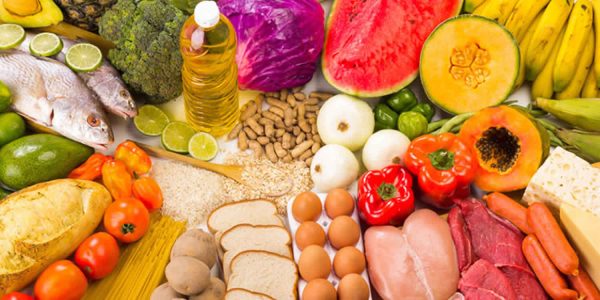The gut microbiome is made up of the 100 trillion bacteria that reside in your gastrointestinal system. Building up your beneficial bacteria has been connected to a lower risk of diseases including cancer, cardiovascular disease, and lifespan as well as metabolism, arthritis, and depression.
According to Marisa Moore, RDN, “Gut health effects so much more than digestion.” “Your overall health depends on having a healthy gut microbiota,”
Consider how well your immune system works. The gut contains over 70% of the body’s immunological cells and tissue, according to RD Anna Binder-McAsey. You can have recurrent illness, food sensitivities, and an increased risk of chronic diseases if your microbiome is out of balance.
Your gut health can be recovered by making minor dietary adjustments. While processed foods and sweets can devastate the gut microbiota, gut health can be restored with a balanced diet high in fibre and included these 15 foods:
Apples
Apple pectin, a soluble fibre that helps you feel full by lowering cholesterol, improving insulin sensitivity, and improving digestion. Pectin is also a prebiotic, according to a 2019 study that was published in Frontiers in Microbiology, and it helps the growth of beneficial gut flora. Moore asserts that “fibre, lots of fibre, is extremely vital for gut health.”
Bananas
The well-known fruit of the tropics is a top-logged food on Herbal Care Products. In addition to having two types of fiber—pectin, which aids in digestion, and resistant starch, which provides food for good gut bacteria—bananas are well recognised for having high quantities of potassium. In unripe bananas, resistant starch is more abundant (aka the ones that are slightly more green). However, according to Binder-McAsey, “you’ll still receive wonderful advantages from a lovely bright yellow banana, even if you don’t like green bananas, which can taste a little bitter.”
Beans
Find opportunities to increase your intake of beans. Black beans are one of the fiber-rich foods that have been demonstrated to enhance intestinal barrier function or your body’s capacity to combat pathogens. According to Moore, different beans contain various nutrients. “Aim to include a variety of beans in your diet, such as lentils, black beans, and pinto beans.”
Brussels sprouts
According to Binder-McAsey, the mustard family includes Brussels sprouts, broccoli, cauliflower, radish, bok choy, mustard greens, and cabbage. These have prebiotic fibre, which probiotics use as nourishment. These foods don’t necessarily induce bloating, although some people find that they do. According to her, the lack of beneficial microorganisms in the gut that can break down the prebiotic fibres in these foods contributes to excess gas. She suggests consuming more probiotic-rich foods (such as kefir and yoghurt, which are also on this list), which will help populate your gut, if you have gas after eating a meal with a side of Brussels sprouts. Then, you can gradually increase your intake of vegetables.
Chickpeas
In addition to being wonderful roasted, added to salad, or crushed for hummus, chickpeas are a multipurpose bean. Moore claims that chickpea flour can be used to make delicious pasta. Garbanzo beans, commonly known as chickpeas, are a fantastic source of plant-based prebiotics because they are high in protein and fibre. Don’t consume canned chickpeas because they have less prebiotic fibre than dried chickpeas.
Fatty Fish
Salmon and sardines, two fatty fish, are excellent sources of protein and promote intestinal health. They are abundant in polyunsaturated omega-3 fatty acids, which have been connected to cardiovascular health, modulation of mood, and the reduction of inflammation. According to Binder-McAsey, chronic low-grade inflammation is one of the causes of poor gut health. These fats may also improve the gut lining by boosting the diversity of the gut flora. Research reveals that they also aid in feeding “good” microorganisms.
Fermented veggies
According to Binder-McAsey, fermented foods such as pickles, kimchi, and sauerkraut are excellent sources of non-dairy probiotics. The key is to read the label, as not all of the fermented veggies on the shelves of grocery stores contain live cultures. For instance, a lot of store-bought pickles are simply pickled cucumbers, according to her. She claims that other companies, like Bubbies, use fermentation to produce these live cultures. Although brand-specific label terminology varies, search for phrases like “fermented” or “cultures.”
Kefir
Like yoghurt, the fermented milk beverage has probiotics. Kefir is created by mixing kefir grains with milk, and the term “kefir” is derived from the Turkish phrase meaning “feeling well.” The nutrient-rich beverage has 61 types of bacteria and yeast that support gastrointestinal health in addition to protein, calcium, magnesium, and vitamin B12. If you’re lactose intolerant, kefir is a decent choice because it contains less lactose than yoghurt, according to Young. Kefir can be poured over cereal, added to smoothies, or sipped like milk.
Leafy Greens
Leafy greens, such as kale, spinach, endive, chard, and beet greens, are high in fibre, vitamins, and minerals but low in calories. According to Binder-McAsey, “the fibre both helps with bowel regularity and works as prebiotics that maintain the microbiome.” Both raw and cooked greens provide health benefits, but if you want to increase the amount of fibre on your plate, choose cooked. According to the USDA, 1 cup of cooked spinach offers about 5 grammes of fibre, compared to 1/2 gramme in 1 cup of raw spinach.
Nuts
Almonds, walnuts, and pecans are all excellent sources of fibre, which, according to Moore, gives your body the essential nutrients it needs for digestion and general health while also assisting gut bacteria in breaking down food. According to research in The Journal of Nutrition, eating 1/3 cup of walnuts every day for six weeks enhanced the abundance of three particular bacteria that are good for the gut microbiota.




